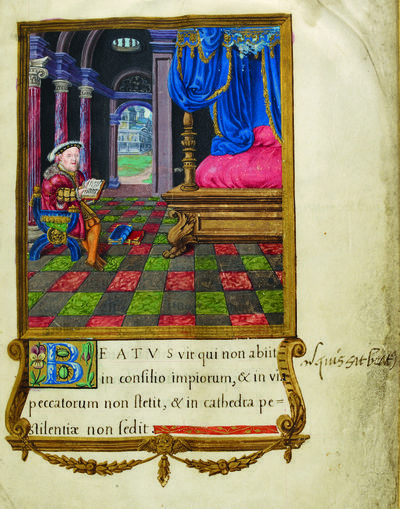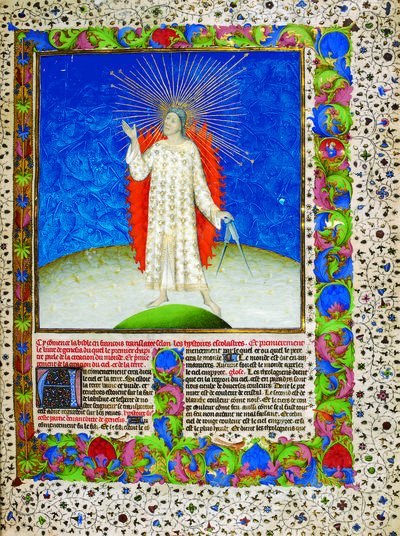Kingship illuminated
Among other things, Royal Manuscripts: The genius of illumination, a new exhibition that opened at the British Library last week, reveals how fond medieval monarchs were of seeing themselves illuminated.
The image above of Henry VIII shows him usurping King David's throne, in a Psalter made for his personal use (that's Henry's handwriting in the margin, apparently). In this respect, although this illuminated manuscript dates from the middle of the sixteenth century, it is consistent with the fourteenth-century copy of Le Songe du Vergier (The Dream of the Orchard) also on display in this exhibition, which was made for Charles V of France: Charles duly appears at the beginning of the book, arbitrating in a debate between representatives of secular power to his left and those of spiritual power to his right. A border of trees suggests the orchard side of things, while a sleeping figure at the bottom of the picture shows that the debate is a writer's dream. The significance of the rabbits emerging from burrows is not quite so clear.
There is an earlier work, however, a genealogical chronicle of English kings unfurled in another display case (it's a parchment roll rather than a codex), in which the rabbits may have a symbolic reason for loitering around the Norman family tree: they are there, it has been suggested, to represent the Norman line's fecundity. It was a dynasty that bred like rabbits. The appropriate result, of course, in a circle towards the bottom of the scroll, is "William bastard" – ie, William the Conqueror.
(Or perhaps it has more to do with the Normans' introduction of the farming of rabbits, or "coneys", to Britain, first recorded in the twelfth century, on Drake's island in Plymouth Sound. . . .)
The British Library invites comments on these images and many more, in its facebook albums (nine people, at the time of writing, "like" the Henry VIII psalter; "Not very flattering of the king", the BL itself loyally remarks). Smartphones can be treated to an app that includes videos and plenty of images. If you can't make it to the exhibition itself – which will be reviewed in a future issue of the TLS – here at least are two ways of viewing some of the earliest and most important acquisitions of the British Museum in the 1750s, when George II donated what became known as the "Old Royal Library", including about 1,200 decorated manuscripts, to the then-new institution. So while God wielding his world-creating compass "against a background of red and blue angels" (as the curators put it in an introductory guide to the subject), Brutus and his brother ticking off a queue of Roman ladies for dressing sumptuously (as seen by the makers of a lavish two-volume work made to order for Edward IV, that is), and Alexander the Great, backed up by his entire army, warding off a coalition of hostile dragons may seem to be diverse images, the exhibition that brings them together in public has been a long time in the making, you might say.
Peter Stothard's Blog
- Peter Stothard's profile
- 30 followers






